Creating a DIY herb garden is an easy and rewarding project that can provide you with fresh herbs for cooking all year round. Whether you have a large or small balcony, you can create your herb garden with just a few simple steps. This article will outline the steps to create a DIY herb garden for cooking, including choosing the herbs, selecting the location, preparing the soil, planting the herbs, caring for them, and harvesting them. With this guide, you can have fresh and flavorful herbs whenever needed.
Contents
The Benefits Of Owning A Herb Garden
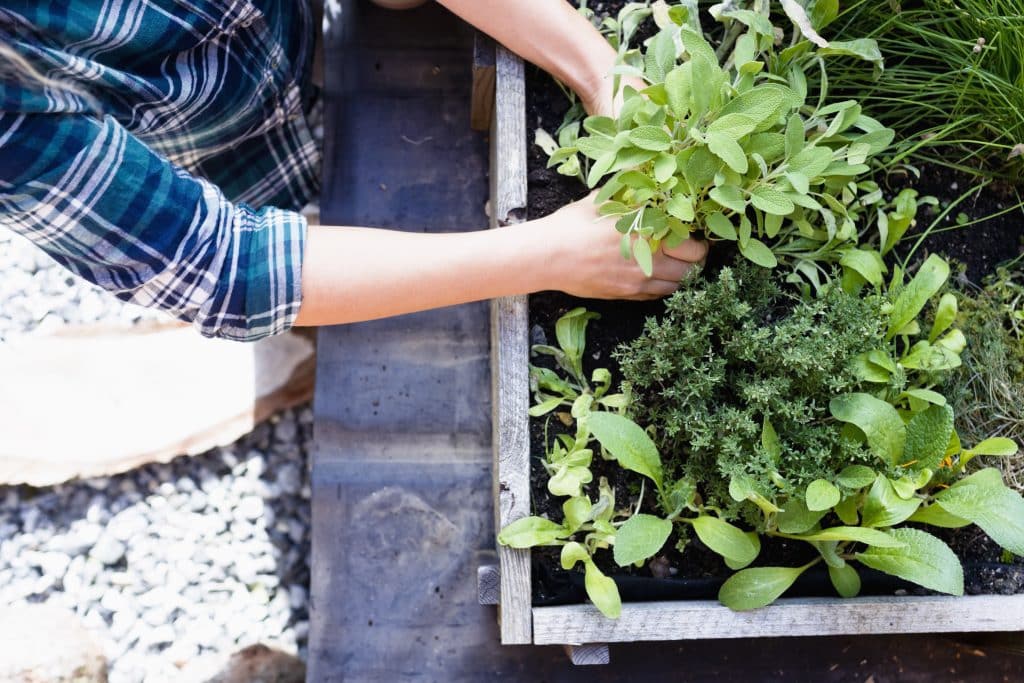
Herb gardens offer a variety of benefits beyond just adding fresh flavors to your meals. By growing your herbs, you can ensure they are organic and free of harmful pesticides or chemicals. Additionally, herbs add visual appeal to your yard with bright colors and unique textures that can enhance the overall look of your outdoor space.
Whether you are an experienced gardener or just starting, owning a herb garden can benefit your health and wallet. Tending to a garden can also be a calming and therapeutic activity, providing a sense of relaxation and accomplishment as you watch your plants grow. Finally, herb gardens are a cost-effective way to add flavor to your cooking, as they eliminate the need to buy expensive herbs from the grocery store.
How To Create A DIY Herb Garden For Cooking
It’s no secret that fresh herbs are a great way to make your meals delicious and nutritious. Here is a step-by-step guide on how to create a DIY herb garden for cooking:
Choose The Herbs You Want To Grow
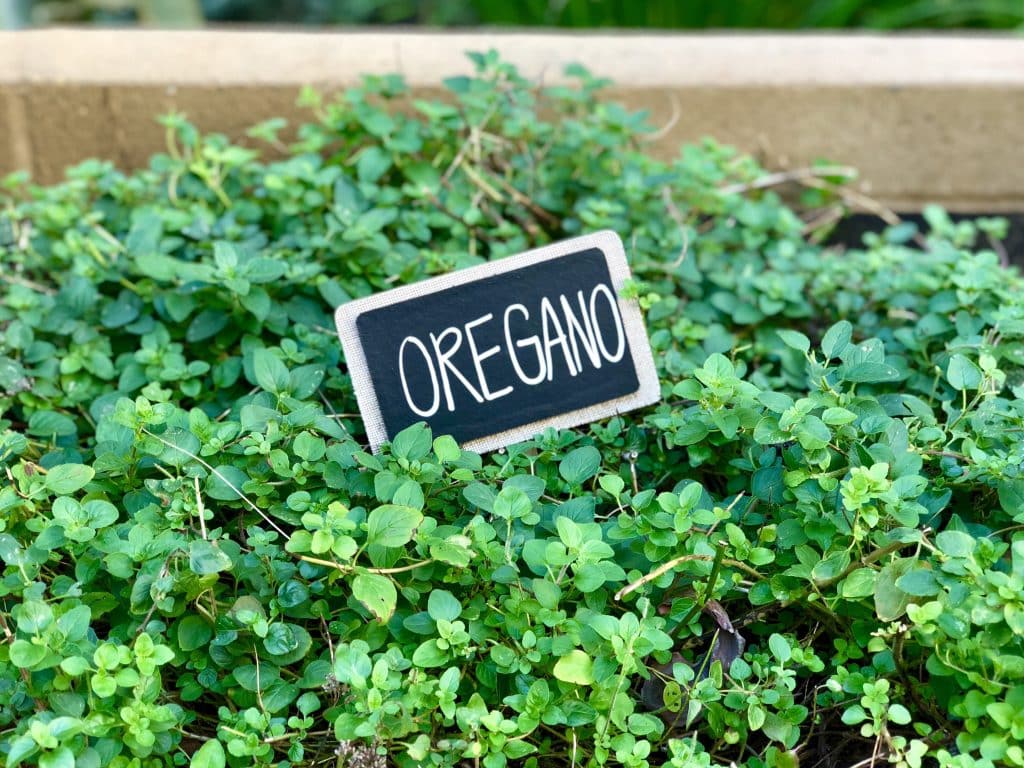
The first step in creating a DIY herb garden is to decide which herbs you want to grow. Consider the herbs that you frequently use in your cooking, as well as any herbs that you’ve always wanted to try. Some popular choices include basil, thyme, rosemary, parsley, chives, mint, and oregano. Depending on your cooking preferences, you may want to choose herbs that are commonly used in Mediterranean, Asian, or Mexican cuisine.
When choosing herbs to grow, consider how much space you have available. If you have a small balcony or windowsill, choose a few herbs that can grow in containers. If you have a larger garden, you may have more options for growing herbs in the ground. Additionally, consider the climate in your area and whether the herbs you choose can thrive in that environment.
Decide On The Location
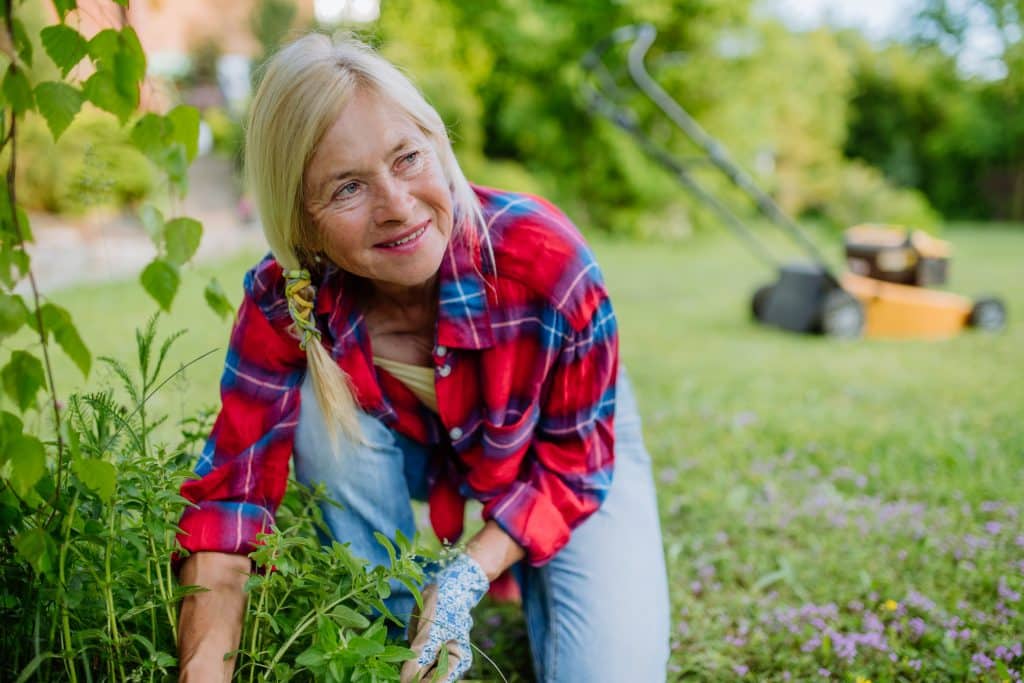
The next step in creating a DIY herb garden is to choose the location. Herbs need plenty of sunlight to grow, so choose a location that receives at least 6 hours of sunlight per day. If you’re growing herbs indoors, choose a spot near a window with plenty of sunlight. If you’re growing herbs outdoors, choose a spot in your garden or balcony with ample sunlight.
In addition to sunlight, consider other factors like wind and humidity. Herbs generally prefer moderate humidity, so avoid locations that are too dry. Also, choose a location sheltered from strong winds, which can damage delicate herbs.
Choose The Containers
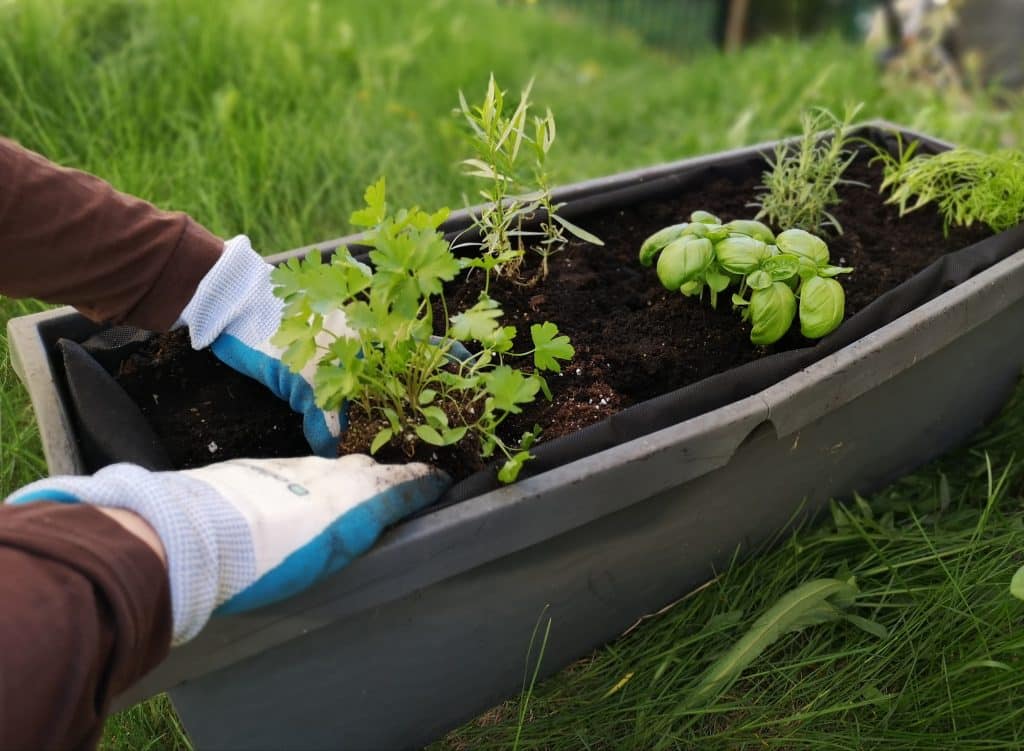
If you’re growing herbs in containers, the next step is to choose the containers. Choose containers that are the appropriate size for the herbs you’re growing and that have drainage holes to prevent overwatering. You can use pots and buckets or repurpose old containers like jars or tin cans.
When choosing containers, consider the aesthetic of your space. You can choose containers in various colors and materials, such as terracotta, ceramic, or plastic. You can also add decorative elements like painted designs or labels to personalize your herb garden.
Prepare The Soil
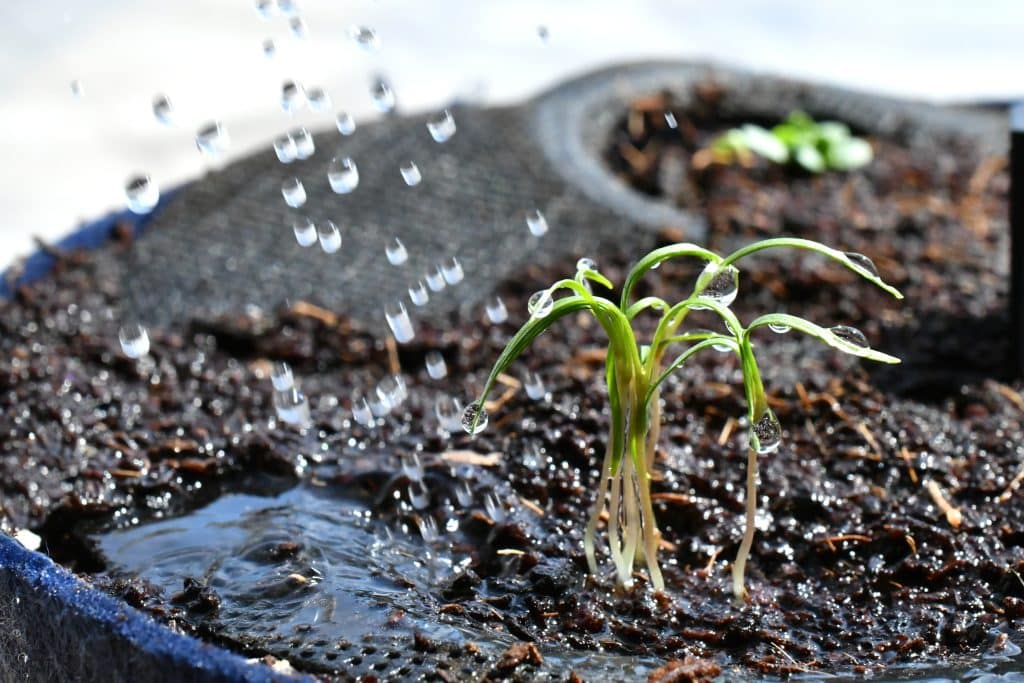
Preparing the soil is important, whether to grow herbs in containers or on the ground. Herbs prefer well-draining soil that is rich in nutrients. If you’re growing herbs in containers, fill them with potting mix specially formulated to provide the right balance of nutrients and drainage. If you’re growing herbs in the ground, loosen the soil and mix in some compost to enrich it.
Before planting your herbs, ensure the soil is moist but not waterlogged. If the soil is too dry, water it thoroughly before planting. If the soil is too wet, wait to dry out slightly before planting.
Plant The Herbs
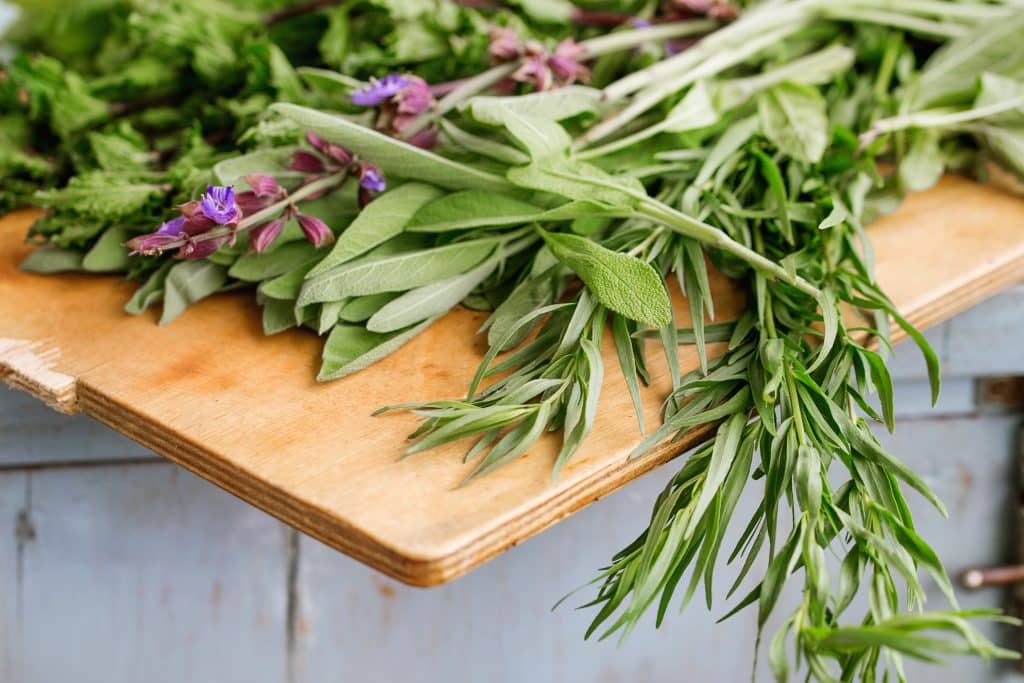
Once you’ve prepared the soil, it’s time to plant the herbs. If you’re growing herbs in containers, plant one herb per container, leaving enough space between each plant to allow growth. If you’re growing herbs in the ground, plant them in rows or clusters, leaving enough space between each plant to allow growth. When planting herbs, plant them at the same depth as they were in their original container or nursery pot. This will help the herbs establish themselves more quickly. After planting, water the herbs thoroughly to settle the soil around the roots.
It’s important to note that some herbs are perennials, meaning they will come back year after year, while others are annuals and must be replanted yearly. Make sure to choose the right type of herb for your garden and climate.
Care For The Herbs
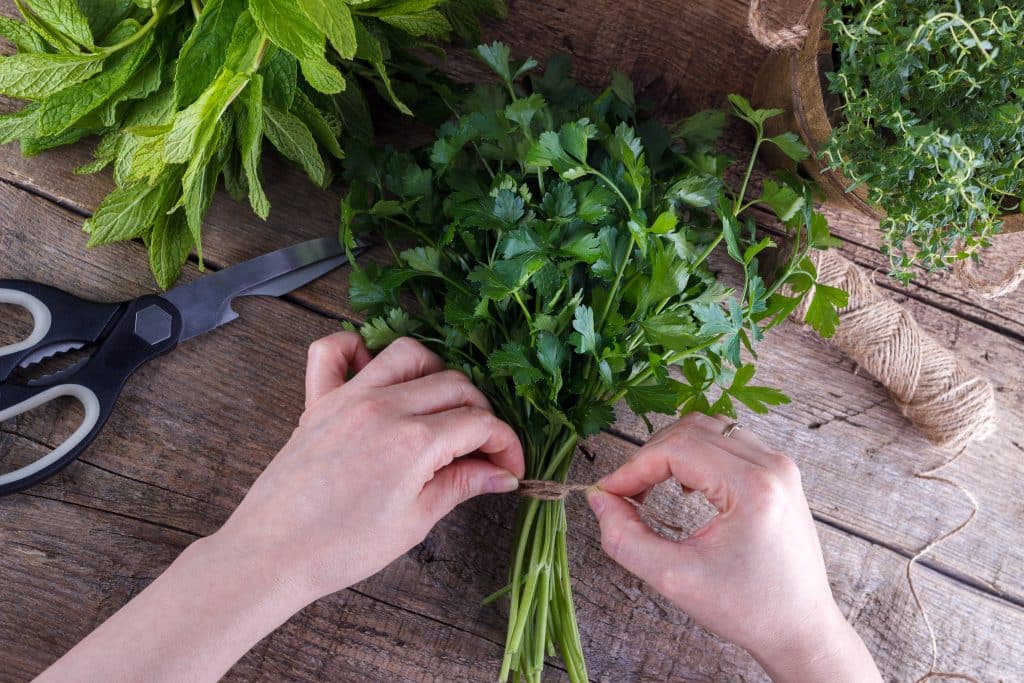
To ensure your herbs thrive, it’s important to care for them properly. Here are some tips for caring for your herbs:
- Water the herbs regularly, making sure not to overwater them. Most herbs prefer well-draining soil, so let the soil dry out slightly between waterings. Herbs generally need about 1 inch of water per week from rain or irrigation.
- Fertilize the herbs every few weeks with a balanced fertilizer. This will give them the nutrients they need to grow healthy and strong. You can also use organic fertilizers like compost or fish emulsion.
- Pinch back any leggy growth to encourage bushier growth. This is particularly important for herbs like basil and mint, which can become tall and spindly if not pruned regularly. Pinch back the stems just above a leaf node to encourage new growth.
- Check the herbs regularly for pests and diseases. Aphids, spider mites, and whiteflies are common pests that can affect herbs. If you notice any signs of pests or disease, treat them immediately to prevent them from spreading to other herbs.
Harvest The Herbs
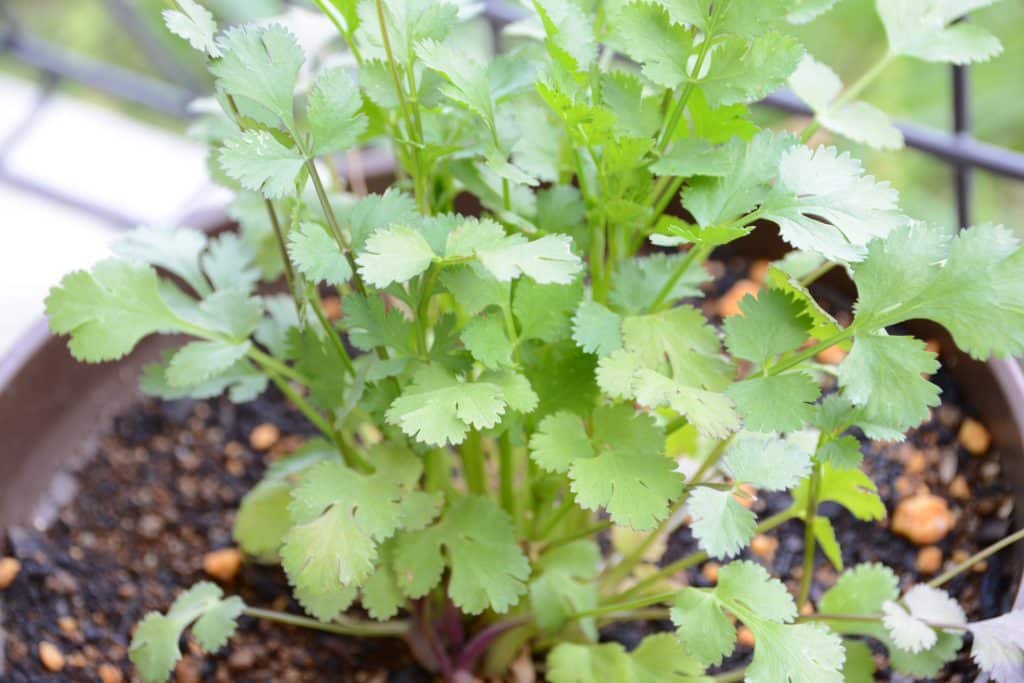
Once the herbs have grown sufficiently, you can start harvesting them. Harvesting herbs regularly will not only provide you with fresh herbs for cooking, but it will also encourage the plants to produce more foliage. Here are some tips for harvesting herbs:
- Harvest the herbs in the morning when the oils are the strongest. This will give you the most flavorful and aromatic herbs.
- Cut the stems just above a leaf node to encourage new growth. This will also help the plant maintain its shape and prevent it from becoming too leggy.
- Only harvest up to one-third of the plant at a time. This will give the plant enough foliage to grow and produce throughout the season.
Use These Tips To Create The Perfect DIY Herb Garden For Cooking!
Creating a DIY herb garden for cooking is a fun and easy project that can provide fresh herbs all year round. By choosing the right herbs, selecting a good location, and caring for the plants properly, you can enjoy a bountiful herb garden that will enhance your cooking and bring you joy. Remember to choose herbs that thrive in your climate and harvest them regularly to keep them producing. With these tips, you’ll be on your way to creating a beautiful and functional DIY herb garden in no time!